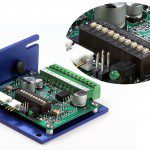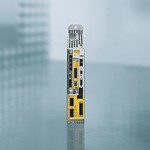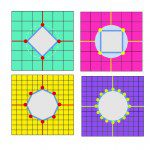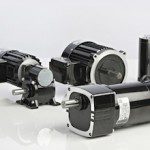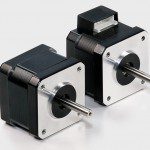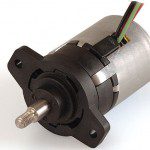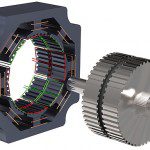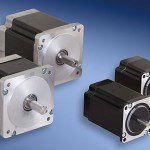Dual in-line package or DIP switches are manual electronic switches that, along with other switches in one package, form one unit. They usually mount on printed circuit boards through pins. Some common types of DIP switches include rotary, slider and rocker switches. Through them, end users configure circuit boards or controllers for the application at […]
FAQs + basics
FAQ: What are motion-control systems on a chip (SoCs) for stepper motor control?
A system on a chip is an integrated circuit that contains all the components of a computer. That is everything from processors, memory and power regulation to external inputs such as USB. For stepper drives, this means one chip combines all the stepper components that are traditionally separate parts. More specifically, the drive, indexer, computer, […]
FAQ: How do engineers typically integrate stepper drives?
Engineers can implement stepper motor drives in numerous ways. Companies often produce pre-packaged drives that can run with a variety of microprocessors and motors. This means that that drive is prefabricated and the engineer has many decisions on where and how to use it. Beyond this, some companies even offer complete off-the-shelf boards. These combine […]
FAQ: What are stepper drives and how do they work?
A stepper drive is the driver circuit that controls how the stepper motor operates. Stepper drives work by sending current through various phases in pulses to the stepper motor. There are four types: wave drives (also called one-phase-on drives), two-phase on, one-two phase-on drives and microstepping drives. Wave or one-phase-on drives work with only one […]
FAQ: What are gearmotors and what do they do?
A gearmotor is a single component that integrates a gear reducer with either an ac or dc electric motor. Thanks to its gearset, a gearmotor can deliver high torque at low horsepower or low speed. Gearmotors are most common in applications that need a lot of force to move heavy objects. Most industrial gearmotors incorporate […]
FAQ: What is pullout torque and why is it a critical stepper motor value?
Stepper motor pullout torque is the highest torque a stepper motor can output at a given speed without losing steps. Manufacturers find a stepper motor’s pullout torque by accelerating the motor up to the target speed and then increasing the torque load until the motor starts missing steps or stalling. Performing this test operation over […]
FAQ: How do stepper motors handle inertia mismatch?
Inertia mismatch is the difference between the inertia of the system and inertia of the stepper motor. A large inertia mismatch is usually best avoided for machines run by stepper motors. One, the stepper motor itself has inertia it must overcome, in addition to the inertia of the system it drives. Two, friction further affects […]
FAQ: What are hybrid stepper motors?
Hybrid stepper motors combine aspects of both permanent magnet (PM) and variable reluctance (VR) stepper motors. Like PM motors, they contain a permanent magnet in the rotor teeth. Two sets of teeth called cups ring the rotor. One ring is all south poles, and the other ring is all north poles. Like VR motors, hybrid […]
FAQ: Aren’t heat and noise some common stepper motor problems?
Heat and noise both depend on the type of stepper motor, the conditions in which it operates, and what functions the motor serves in the application. Permanent-magnet stepper motors are usually most quiet, as they have a smooth rotor. Hybrid stepper motors are quiet as well. In contrast, variable-reluctance stepper motors are the noisiest type […]
FAQ: What is pole count and why does it matter?
Simply defined, a pole is a north or south magnetic field of force that is generated by a permanent magnet or current passing through a coil of wire. For stepper motors, however, this definition does not necessarily translate to a simple definition of pole count. Different manufacturers use different names to refer to their poles […]

